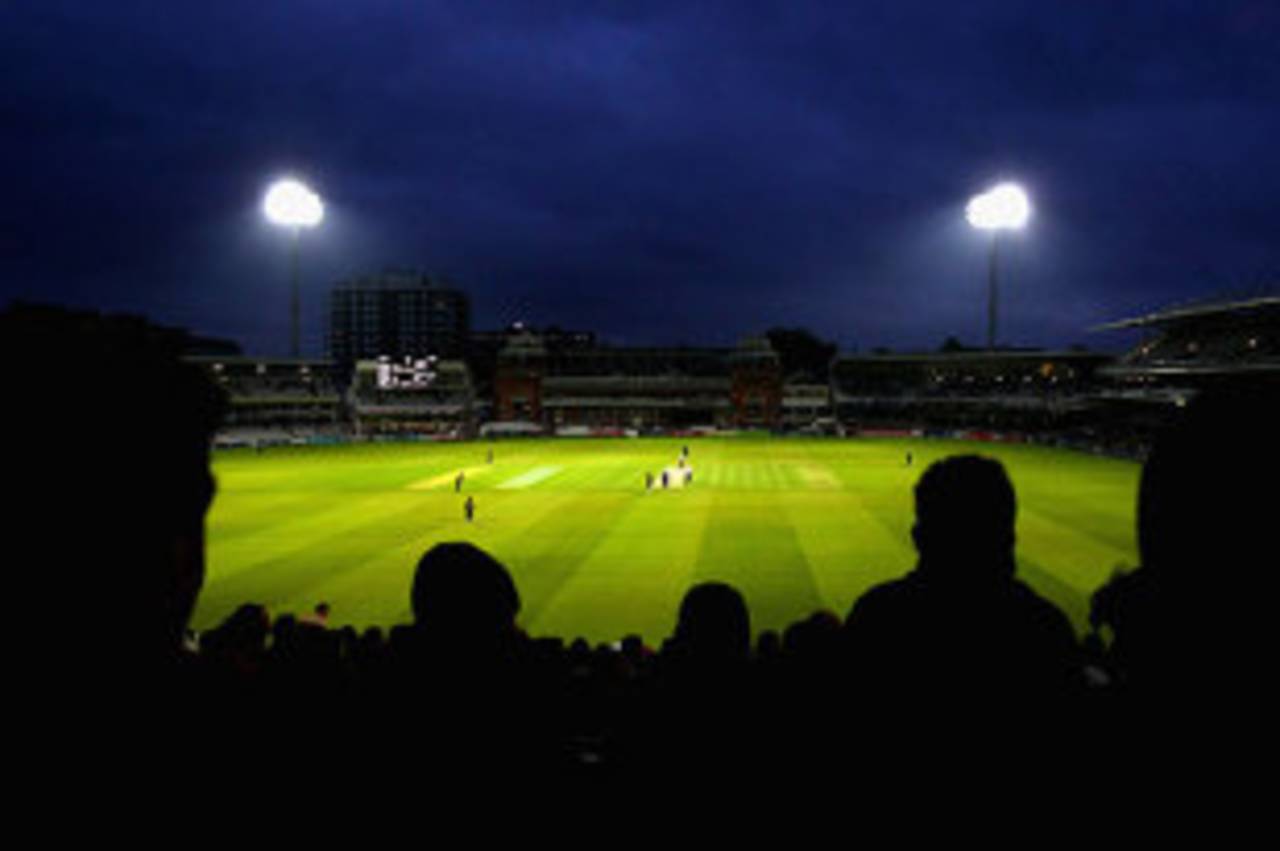Floodlit cricket, the brainchild of Kerry Packer and hence immediately derided as a bastardised version of the game, is now an assimilated, integral part of the game all over the world. The fact that 52,000 spectators attended the first match to be staged under lights, in Sydney in 1977, illustrated what a novelty and an attraction this would be. A spectacle, too, on a balmy night.
In the southern hemisphere, clearly this would continue to be popular with all age groups. In India, floodlights amounted to a status symbol: in the 21st century even some club matches in Bombay were taking place under lights. In that great bustling city of festivals and outdoor weddings, no one objected to light pollution. Or, as elsewhere in the cricket-playing world, gave any thought to the effect on the environment. When breakaway tours were organised in South Africa in the mid-1980s, braais under floodlights were one method of attracting spectators.
In England there was less conviction that night cricket would take hold, even though the first floodlit match ever staged is thought to have been as long ago as 1952, between Middlesex and Arsenal FC at Highbury football stadium. That was a hit-and-giggle benefit match - and it was assumed when World Series was underway that Packer's night matches would be little different.
"When it was announced World Series would play night matches, the laughter was intense and more than slightly mocking," recalled Richie Benaud, who was instrumental in their promotion for Packer. "It was a marvellous evening in Sydney, full of emotion, even for the more cynical observers."
Of whom, he might have added, there were plenty who felt the climate in England would be an insurmountable obstacle. Although there were one or two freelance ventures, with mixed success, not for another 20 years would the first competitive floodlit fixture between two county sides be staged. Inevitably, on June 26 1997, it rained at The Oval. Was such a sizeable investment sensible if spectators would remain huddled together in the cold and damp?
Worse than rain interruptions during the day were rain interruptions at night, when the temperatures were dropping and the sole attraction was a packed bar. Better, perhaps, to concentrate on holding all such fixtures at the end of June and beginning of July, when daylight hours negated any need for floodlights. Yet before long, crowds were drawn to grounds at varying times of the season. The first limited-overs international match under lights was staged
in Bristol in 2000. The quality of thee towers was improving, minimising the glare that was off-putting for players, umpires and spectators, and enhancing the pictures that television viewers were seeing.
Another decade on from the inception of floodlit cricket in England and Giles Clarke, the chairman of the ECB, was advocating that all county clubs should install floodlights of their own and that Test, as well as county, cricket should be played at a time of day that suited the spectators, not necessarily the players. International matches under lights would not be confined to just the one-day variety. Even at Lord's. The advent of Twenty20 cricket attracted a new audience. They liked the concept of matches at night, even if the cricket was a sideshow.
There were, of course, drawbacks. There had to be sufficient kilowatts emitted for the batsmen and fielders to be able to pick out the ball. Light pollution did not go down well with residents who lived close to grounds. There was even a concern at the Rose Bowl that fully lit pylons would interfere at night with aircraft approaching Southampton airport. One or two matches had to be called off because high winds were affecting the lights. At venues like Hove, where Sussex led the way in erecting lights, it was a question of aesthetics. Would the metaphorical golden glow still be apparent?
There were planning issues, so that at Lord's retractable towers, more than 47 metres in height, became the only valid option when night cricket was finally staged there in 2007. And when the first floodlit final was held there in 2010, those Somerset supporters travelling by train were unable to return to the west country that evening as the last Taunton-bound service departed at 8.30pm. Hence the first £200-a-head county match was staged. However popular it had become, night cricket was not cheap.
